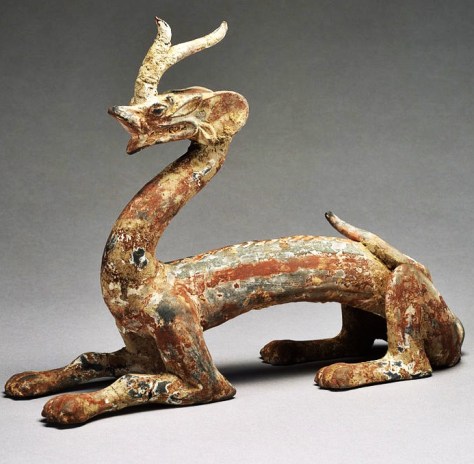
9. Scottish Ghost Village
Broo, a former farming town in Scotland’s Shetland Islands, located
just south of the Arctic Circle, experienced extreme weather, including
bone-chilling temperatures and harsh winds. Oddly, however, the settlement
ultimately succumbed to sandstorms that began pummeling the island around 1665.
While windswept sand from the shore was nothing unusual, these storms occurred
on a magnitude unlike anything the townspeople had ever seen before, destroying
their homes and crops, and giving them no other choice than to flee.

8. Pyramid-Shaped Chinese Burial
In March 2017, archaeologists discovered a mysterious pyramid-shaped
tomb beneath a construction site in Zhengzhou, the capital city of China’s
Henan Province. Based on an initial analysis, experts surmised that the tomb
likely dates back to the Han Dynasty, otherwise known as China’s “golden age,”
which lasted from 202 B.C. to 220 A.D.

7. Royal Stone Head
In August 2019, archaeologists digging at Shaftesbury Abbey in Dorset,
England discovered a 14th-century stone head that, in the words of expert Dr.
Julian Richards, “raises a lot more questions than it answers.” Richards led
the excavation that uncovered the artifact, which was found with a rosary bead.
The gender and identity of the head is unknown, although it depicts a royal —
perhaps the monarch Edward II — according to an examination performed by Dr.
Jonathan Foyle, director of Build Heritage Ltd. It dates back to the 1340s and
boasts a similar hairstyle to other known images and carvings of Edward II of
the time.

6. Strange Mythical Bathroom Tile Beast
While excavating the basement at the Courtauld Institute of Art in late
2019, archaeologists with the Museum of London Archaeology (MOLA) discovered a
14th-century cesspit that was paradoxically filled with priceless artifacts. A
cesspit and artifacts? That should not go together!!

5. Three Whale Rock
Hin Sam Wan, or “Three Whale Rock,” is a 75-million-year-old rock
formation in northeastern Thailand that when you look at from the sky, looks
like you are looking at a family of whales swimming through the forest! At the
right angle it looks like they are jutting out right over a cliff or mountain
top that also looks like a wave.

4. A Brutal End
A recently published study depicts what experts believe was the first
case of intentional facial mutilation in Anglo-Saxon England. A young woman’s
nose was removed, most likely as a punishment. The findings are based on the
1,100-year-old skull of a young woman, whose nose and upper lip appear to be
deliberately removed, and who may have also been scalped.

3. Mummified Penguin Cemetery
A team of biologists led by researcher Steven Emslie from the
University of North Carolina recently discovered a large collection of
mummified penguins in Cape Irizar. While this might not sound that strange,
this is a part of Antarctica that penguins are not known to frequent in the
first place. Based on radiocarbon dating, the remains range from a few hundred
years old to anywhere between 5,000 and 8,000 years old.

2. Unusually Placed Corpses
Almazán, a town in Soria in Spain, is seemingly inconsequential in
today’s world, with its small population of just 5,500 residents. But during
medieval times, it was a powerful political hub that important historical
figures passed through and it was the perfect meeting point for strategizing
invasions into Muslim territory.

1. The Chaco Culture
The architectural remains of the Chacoans, ancestors of the Puebloans, are found in northwestern New Mexico in the form of a vast building complex, known as Chaco. Dating back between 850 and 1250 A.D., the structures were once home to as many as 5,000 people, who thrived in the arid, extreme climate, which sees scorching-hot summers and frigid winters.

WATCH VIDEO IN ACTION RIGHT HERE BELOW:
SHARE this article with all your animal-loving friends and family.





0 Comments